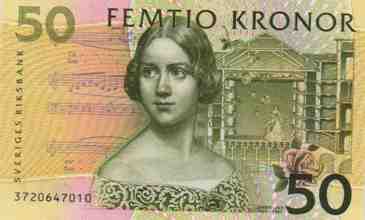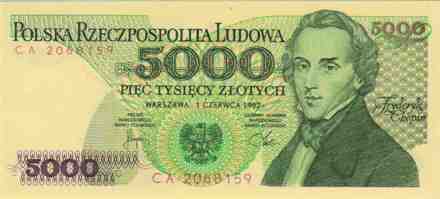
If a composer
could say what he had to say in words he would not bother trying to say it
in music.
~ Gustav Mahler
If music be the food of love, play on ~ William Shakespeare
Wolfgang Amadeus Mozart (1756 – 1791) was a prolific and influential composer of the Classical era. Many consider him as the greatest composer of all time. He composed over 600 works, many acknowledged as pinnacles of symphonic, concertante, chamber, piano, operatic, and choral music. (Mozart on Austria's 1 Euro coin.) He was also featured on 5000 ATS Banknote which is no longer in use.
Chopin portrayed on 5000 Polish Zloty banknote
Frédéric Chopin (1810 –1849) was a Polish composer and virtuoso pianist. He is considered one of the great masters of Romantic music. The great majority of Chopin's compositions were written for the piano as solo instrument and he was responsible for major innovations in the piano sonata, mazurka, waltz, nocturne, polonaise, étude, impromptu and prélude.

Hector Berlioz (1803 – 1869) was a French Romantic composer, best known for his compositions Symphonie fantastique and Grande messe des morts (Requiem).
George Enescu (1881 – 1955) was a Romanian composer, violinist, pianist, conductor and teacher.
Jenny Lind (1820 – 1887) was a Swedish opera singer, often known as the "Swedish Nightingale". One of the most highly regarded singers of the 19th century, she is known for her performances in soprano roles in Sweden and across Europe. She had performed with Felix Mendelssohn in Vienna and Leipzig.
Manuel de Falla (1876 – 1946) was a Spanish composer of classical music.
Isaac Albéniz (1860 – 1909) was a Spanish Catalan pianist and composer best known for his piano works based on folk music idioms that have been transcribed for guitar.
Béla Bartók (1881 – 1945) was a Hungarian composer and pianist. He is considered to be one of the greatest composers of the 20th century and is regarded, along with Liszt, as Hungary’s greatest composer. Through his collection and analytical study of folk music, he was one of the founders of ethnomusicology.
Giuseppe Verdi (1813 –1901) was an Italian Romantic composer, mainly of opera and his most popular works are La Traviata and Aida.
Johann Strauss II (1825 – 1899) was an Austrian composer of light music, particularly dance music and operettas. He composed over 500 waltzes, polkas, quadrilles, and other types of dance music, as well as several operettas and a ballet. In his lifetime, he was known as "The Waltz King", and was largely responsible for the popularity of the waltz in Vienna during the 19th century.
Claude Debussy (1862 –1918) was a French composer. Along with Maurice Ravel, he was one of the most prominent figures of impressionist music. His music is noted for its sensory component and how it is not often formed around one key or pitch. Often Debussy's work reflected the activities or turbulence in his own life.
Falla on 100 Spainish Pesetas (1970)
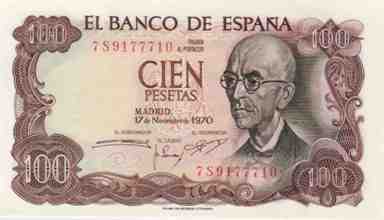
Albeniz on 25 Spainish Pesetas (1954)
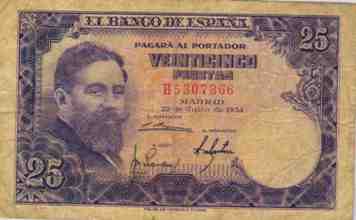
Berlioz Honoured on 10 French Francs
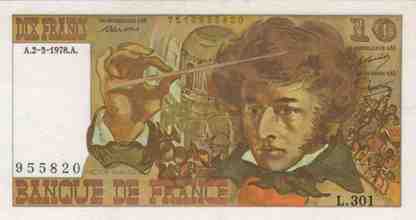
Bartok featured on 1000 Hungarian Forints
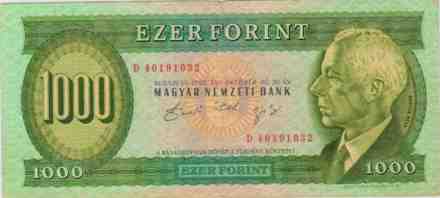
Verdi honoured on 1000 Italian Lira
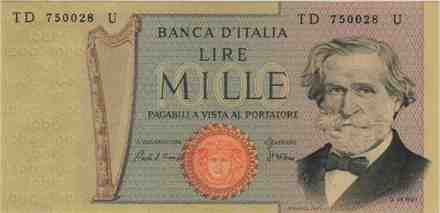
Strauss on 100 Austria Schilling
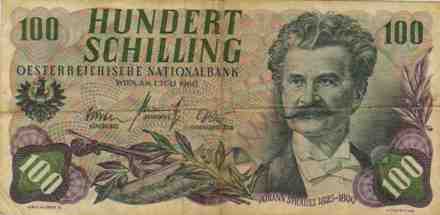
Debussy portrayed on 20 French Francs
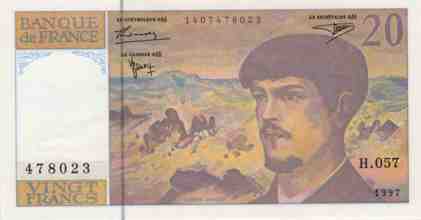
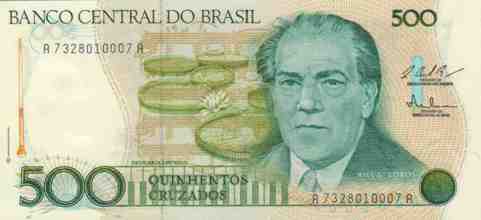
Stevan Stojanović Mokranjac (1856 - 1914) was a nineteenth century Serbian composer and music educator. His work was essential in bringing the spirit of Serbian unwritten folk poems into organized art.
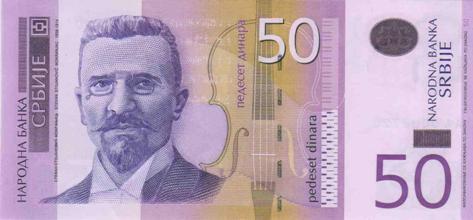
Gallus on 200 Slovenian Tolars
Jacobus Gallus (1550 – 1591) was a late Renaissance composer of Slovenian origin.
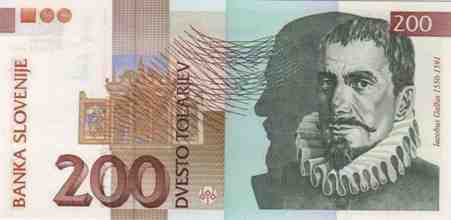
Gomes on on 5000 Brazilian Cruzeiros
Antônio Carlos Gomes (1836 - 1896) is one of the most distinguished nineteenth century classical composers, being the first New World composer whose work was accepted by Europe. He also produced many Operas
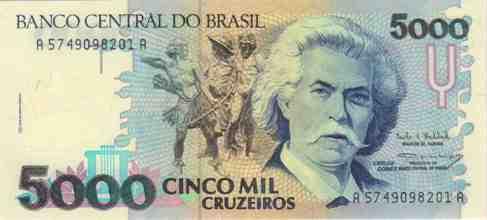
Mokranjac on on 50 Serbian dinars banknote
Lobos on 500 Brazilian Cruzados
Heitor Villa-Lobos (1887 – 1959) was a Brazilian composer. Villa-Lobos has become the best-known and most significant Latin American composer to date. He wrote numerous orchestral, chamber, instrumental and vocal works. His music was influenced by both Brazilian folk music and by stylistic elements from the European classical tradition.
Honegger on 20 Swiss Francs
Arthur Honegger (1892 - 1955) was a Swiss composer. His most frequently performed work is probably the orchestral work Pacific 231, which is interpreted as imitating the sound of a steam locomotive.
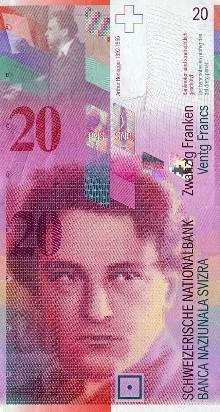
de Monte on 20 Belgian Francs (1956)
Philippe de Monte (1521 – 1603) was a Flemish composer of the late Renaissance. He was a member of the 3rd generation madrigalists and wrote more madrigals (An unaccompanied part song for 2 or 3 voices) than any other composer of the time.
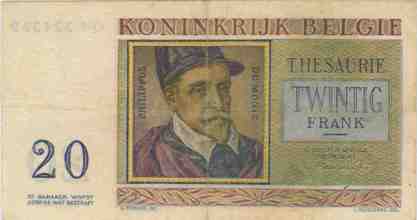
de lassus on 20 Belgian Francs (1956)
Roland de Lassus (1532 - 1594) was a Franco-Flemish composer of the late Renaissance. He is today considered to be the chief representative of the mature polyphonic style of the Franco-Flemish school.
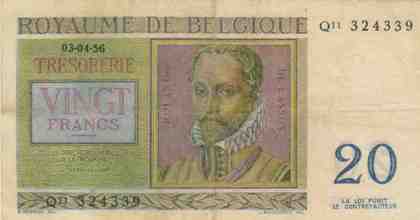
Bellini on 5000 Italian Lire
Vincenzo Bellini (1801 – 1835) was an Italian opera composer. His most famous works are La Sonnambula (1831), Norma (1831) and I puritani (1835). He was known for his long flowing melodic lines for which he was named "the Swan of Catania”.
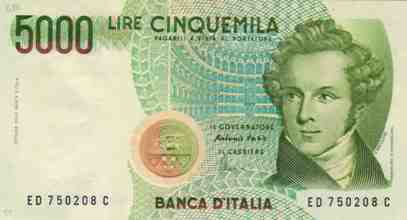
Enescu on 5 Romanian Lei
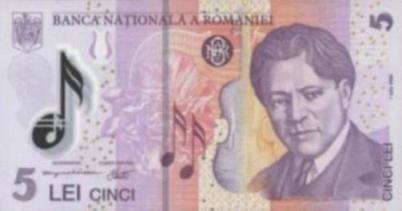
Lund honoured on 50 Swedish Kronor
